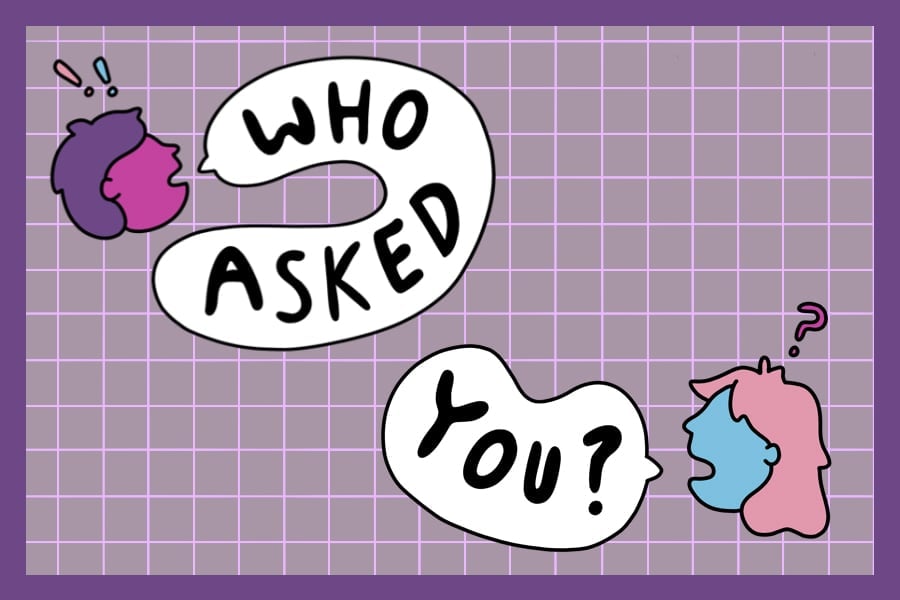
 Rusty patched bumble bees lost 87% of their population over the last couple of decades nationwide — their local populations here in Evanston declined as well. Scientists and residents in the greater Chicago area are conducting research and designing conservation efforts to help this bee and other pollinators.
Rusty patched bumble bees lost 87% of their population over the last couple of decades nationwide — their local populations here in Evanston declined as well. Scientists and residents in the greater Chicago area are conducting research and designing conservation efforts to help this bee and other pollinators.
LIBBY SHAFER: It was the last three minutes of my last survey for that day. And I went to a shaded spot under a tree and saw one bumble bee. And I thought, “That’s a weird-looking bumble bee.” And sure enough, it was the rusty patched bumble bee.
LEXI NEWSOM: That was second-year plant biology and conservation Ph.D. student Libby Shafer. In 2023, she surveyed three states — Illinois, Wisconsin and Indiana — for the U.S. Geological Survey. While at a prairie an hour away from Evanston, she found a rusty patched bumble bee in the area for the first time.
She said she had seen a few in Minneapolis, Minnesota, where she was trained. However, the Evanston native added that she never saw any in the city growing up and hasn’t seen any in Illinois since the one in 2023.
[music]
LEXI NEWSOM: From The Daily Northwestern, I’m Lexi Newsom. This is Everything Evanston, a podcast covering all things Evanston. Today, we’re talking about the rusty patched bumble bee and the buzz it has created in the city.
The rusty patched bumble bee once pollinated flowers from the Midwestern Prairies to the East Coast. However, the population of this bumble bee has declined by 87% in the past two decades.
In 2021, Shafer established The Host Plant Network for her master’s thesis project at DePaul University. This project planted and surveyed native plants that are known to attract the rusty patched bumble bee. Citizens were invited to send photos of the plants they found around Evanston through iNaturalist, a site where people can upload observations of plants and animals.
LIBBY SHAFER: Four years later, people are still really active. It’s an amazing community. People are really invested and supporting each other and adding identifications.
LEXI NEWSOM: One organization has adopted the role of supporting pollinators in Evanston. Natural Habitat Evanston plants trees and advocates for the city and residents to grow out their lawns. Here’s Co-Lead Leslie Shad.
LESLIE SHAD: If we could only just adapt the requirements for aesthetics a little bit to make room for a little bit of nature and allow there to be more native grasses, allow there to be more shrubs in our yards, and reduce our lawns. You can make a big difference. I mean, you know, honestly, when I walk by my yard, I hear the insects singing.
LEXI NEWSOM: Research is ongoing to support and improve these conservation efforts.
Shafer is now focused on the flora side of pollinator conservation. As a member of plant biology and conservation Prof. Becky Barak’s lab, she plants seeds native to Evanston in pots of turf grass to see which grow and how well they can survive.
LIBBY SHAFER: We’re keeping our fingers crossed that some can and that can be a way to enhance lawn space because there’s just so much potential for the lawns and that space for supporting pollinators.
LEXI NEWSOM: However, sporadic gardens alone will not bring the rusty patched bumble bee back.
According to Chicago Botanic Garden research scientist and plant biology and conservation Prof. Paul CaraDonna, it will take a community of pollinator gardens to truly support their population.
And the bees need more than just flowers, he said. In addition to nectar sources, rusty patched bumble bees need a habitat where they can build nests.
PAUL CARADONNA: If you just sort of set up a bunch of grocery stores in the middle of the desert or Death Valley or something where there’s not much people, people aren’t going to arrive there just because there’s a grocery store. They need a place to live. They need other things to be comfortable. So, we like to think of it as, well, in order to support the bee, you have to support the life cycle.
LEXI NEWSOM: Not all bees are in the same position as rusty patched bumble bees. Some, like the Bombus impatiens — or common Eastern bumble bee — are thriving in the city.
Several years ago, he conducted an experiment he called the Chicago Bees project, a pun inspired by the Chicago Bears football team. For the project, CaraDonna’s team counted the number of bees, regardless of species, found at Metra stations to see which species were surviving in the urban environment.
PAUL CARADONNA And there wasn’t really sort of this magic combination of traits that said, “Oh, if you have these, you’re going to do well in the city, and if not, you know, you can’t be here.”
LEXI NEWSOM: Common eastern bumble bees will nest anywhere, even in sidewalk cracks, so they are found across Chicago, CaraDonna said.
Although the rusty patched bumble bee is uncommon, CaraDonna has found them at some Metra stations.
PAUL CARADONNA: It’s a little bit of a mystery, but I think it’s also got a little bit of a hopeful side, that they’re there.
LEXI NEWSOM: Postdoctoral researcher Nicholas Dorian works in CaraDonna’s lab. He also works at the Chicago Botanic Garden, where he studies how pollinators adapt to urbanization, he said.
His research has yielded three main takeaways: One, small urban gardens are capable of attracting wild pollinators, even in the city. Two,
NICHOLAS DORIAN: It’s really inspiring to see lots of insects in a garden and say, ‘It’s tempting to say, “Oh, this garden is working.” But it’s really important to sort of design your garden with the intention of supporting a particular insect or goal.
LEXI NEWSOM: Third, he said citizen scientists have the power to make a difference.
To this end, Dorian recently made a “bee-watching guide.” Similar to common bird-watching guides, this project helps people identify pollinators they may see in the wild.
NICHOLAS DORIAN: It’s going to take a lot of people to learn how ecology works in the city, and going out and watching insects in your backyard is actually a great way of helping.
LEXI NEWSOM: Dorian leads “pollinator safaris” over the summer. These one-hour tours lead adults and children around the Chicago Botanic Garden to get up close and personal with insects.
CaraDonna said these safaris are part of an effort to inspire more enthusiasm for these conservation projects.
PAUL CARADONNA: We’d like to share some of that curiosity that we have with others, so that when you’re in a garden, you’re like, “Damn, I want to plant this too because I want to see these bumblebees show up, this is neat.”
[music]
LEXI NEWSOM: From The Daily Northwestern, I’m Lexi Newsom. Thanks for listening to another episode of Everything Evanston. This episode was reported and produced by Lexi Newsom.
The Audio Editor is Anavi Prakash. The Multimedia Managing editors are Kelley Lu and Jillian Moore. The Editor in Chief is Lily Ogburn.
Our theme music is “Revolution” by Xennial, used under a Creative Commons Attribution 4.0 International License and provided by the Free Music Archive.
Follow us on X and Instagram @thedailynu.
Email: lexinewsom2028@u.northwestern.edu
Related Stories:
— Evanston Host Plant Initiative works to save endangered bee species
— Evanston native plant sale blossoms to benefit birds, bugs
— Norris and sustainNU host Earth Month Fair, plant seed of sustainability




